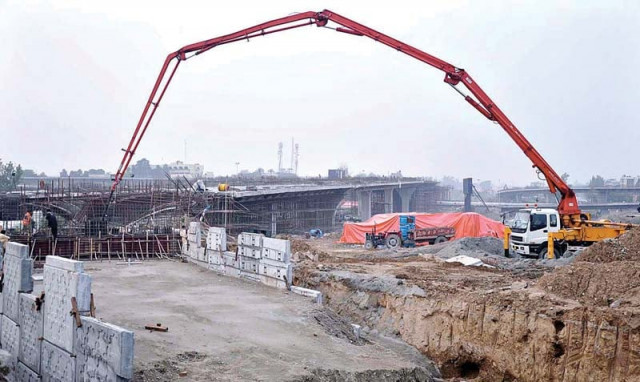Delivery of public sector projects leaves much to be desired
There is a dire need to revamp approach; establish vision of success

With several mega projects in the pipeline under the umbrella of China-Pakistan Economic Corridor, the stakes in project management have never been higher. PHOTO: APP
With several megaprojects in the pipeline under the umbrella of China-Pakistan Economic Corridor, stakes in project management have never been higher. In order to keep performance shortfalls in check, the government needs to invest in new tracking tools for oversight, instead of turning a blind eye on downside risks – a common planning bias known as the EGAP (Everything Going as Planned) principle.
CPEC projects worth $11b cannot be completed in two years: IPR
So there is a dire need not only to revamp the total approach towards project planning by identifying alternative mechanisms, but to also challenge the long-established mental models - as most project directors take PC-1 exercise as a mere formality with a little sense of accountability. In order to secure funding from CDWP (Central Development Working Party) and cut competition from other ministries, they often tend to inflate benefits and underestimate costs in their respective project digests. Such projects are designed to fail and yes, they look great, but only on paper.
Shared vision of success
It is quite vague that what is meant by ‘success’ in the context of a project as stakeholders normally have a totally different and sometimes contradictory view of a successful project. For example, if the government decides to manufacture cars, it needs to be settled earlier that whether ‘success’ means establishing an assembly plant within stipulated budget and cost, or is the ‘success’ attached with reaching a particular sales target.
This success criterion can single-handedly play a crucial part in the project outcome and make it contribute to socio-economic growth of the region in a real sense.
This vision of success at the top should flow downwards so that all stakeholders get a crystal clear idea of what is expected; enabling them to make better decisions in the best interest of nation’s tax-payers. In the absence of such a vision, the project team remains fragmented and stakeholders pursue their own individual interests.
Very often this definition of success is not very result-oriented. Many project directors consider winning an initial PC-1 grant and then subsequent extensions in employment as their primary aim – with little regard to its economic, technical and social goals. In fact, a project director has no incentive to complete a project ahead of schedule as it also means completion of one’s tenure earlier than planned.
Managing uncertainty
For mega projects, the lack of a risk management strategy is not only impediment to growth but it also affects the ability of the government to respond in a timely manner in case of any unforeseen circumstances. As at present, no sensitivity analysis or any Monte Carlo simulation approach is carried out by any ministry regarding financial forecasts in their PC-1 proposals. This shows a sheer ignorance and utter disregard on the part of project managers.
Another major risk is that many projects start with an incomplete design and performance specifications with a progressive elaboration approach, which often results in large scope changes at a much later stage of the project. For example, the cost of the new Islamabad airport has escalated from Rs37 billion to around Rs100 billion as the originally planned runway was found later to be too small. Despite that, there is little enthusiasm shown by project directors in ex-post comparison of estimated costs with actual costs incurred.
Way forward
In June 2015, the Prime Minister established a committee with the mandate to suggest alternative mechanism for bringing efficiency and effectiveness in planning and execution of megaprojects.
The provision of public services
The most successful performance management system ever deployed by the west in general and US in particular has been the earned value management system which provides a disciplined approach to achieve targets by measuring performance data with respect to the baseline plan.
Many enterprises in the third sector as well as donor agencies also use frameworks based on Logical Framework Approach (LFA). However, there are a few problems with this approach as it assumes there is a single root-cause behind every problem and ignores the realm of circular causation. In mega projects, we have a dynamic business environment with uncertainty arising from complicated interactions amongst stakeholder that can’t be catered by LFA.
The writer is a Cambridge graduate and is working as a management consultant
Published in The Express Tribune, November 9th, 2015.
Like Business on Facebook, follow @TribuneBiz on Twitter to stay informed and join in the conversation.



















COMMENTS
Comments are moderated and generally will be posted if they are on-topic and not abusive.
For more information, please see our Comments FAQ